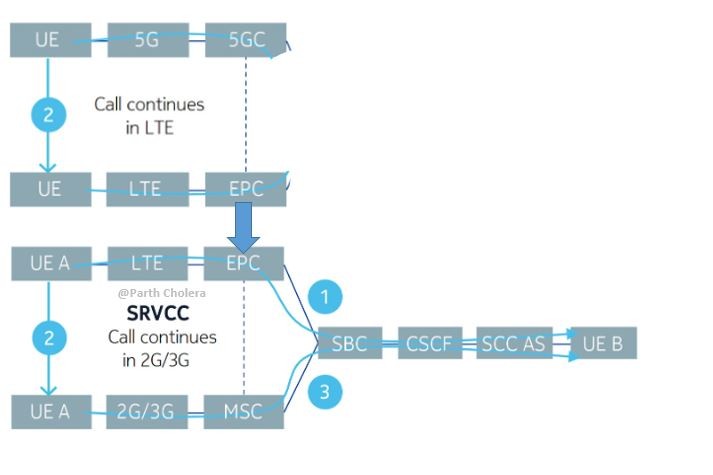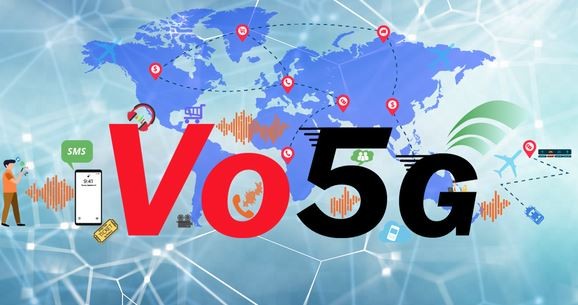
Introduction
How will be voice services in 5G?
What is VoNR (or Vo5G)?
Why is it important to understand & needed for a business perspective for planning future network?
Read it now, for very crisp and clear information.
How will Voice Services work on 5G! - Voice over 5G (VoNR)
Been into telecom background… Voice Service is given the utmost importance… and planning and optimizing for better Voice Service is the end goal for any organization or Telco companies.
Voice is the king of communication if compared with other services and hence this article focus on how will voice services be delivered in 5G.
In the coming days, 5G deployed World will be more important than ever, through various types of use cases. To enable service provider voice calls on 5G smartphones lots of modernization and the network infrastructure conversion would be required which is mention in the article.
The journey to 5G has several possible mobile network migration paths and steps, and voice services must be supported in all evolution steps. So have outlined a series of examples and use cases to help you understand how to take today’s Circuit Switch / VoLTE based voice services into 5G, explaining various network deployment models.
Listing below ways/scenario for enabling Voice services in 5G
1. VoNR to VoLTE/2G/3G Fallback
First deployment across the globe till the time IMS is not enhanced/upgraded - Also Called Dual Connectivity in 5G.
Across the globe, pre-mature deployment of 5G is more focused on providing Ultra-fast data speed and voice is fallback to traditional Voice carrying technologies [VoLTE/2G/3G].
-
The main agenda is to provide Voice services over 4G/2G/3G while using 5G as a data boost.
-
Benefits for the deployment:
- Helps telecom operators/vendors for the early market launch of smartphones with high 5G data speeds.
- Most initial 5G deployments use medium- to high-frequency bands, reducing voice coverage. Improvement possible by using lower 4G frequency bands for voice.
- Drawbacks:
- Poorer voice up-link coverage.
- Shorter battery time on 5G smartphones.
- More complex and costly smartphones.
- Longer call setup time due to fallback from 5G to 4G.
You will see vendor like Huawei, Nokia and Ericsson enhancing their software for providing Uplink & UE power/battery related features and Samsung / Apple in providing robust power-saving features in devices.
Prerequisite to launch
-
Telecom Mobile Network to be S/W upgrade of 4G and 5G Radio Access Network. As of now, Nokia has released the R20 with some features related to 5G.
-
S/W upgrade of EPC [core domain].
-
All the 5G devices should have dual connectivity option i.e in UE → Network selection → 5G/4G/3G/2G presence.
-
All the 5G devices should have VoLTE - enabled for granting HD voice.
Layman Overview
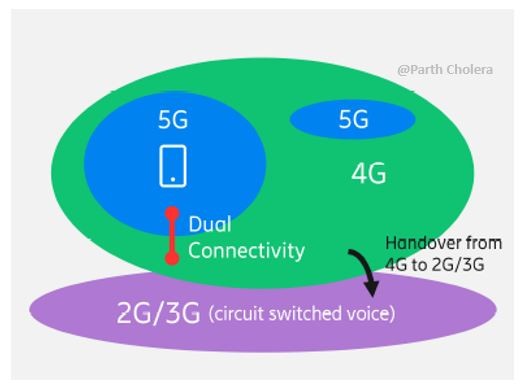
Technical Overview
For all my telecom expert above scene is the same as we had for the devices which were Non-VoLTE and were fallback to the traditional circuit switch domain for voice. Here call diverts to VoLTE from 5G whenever there is Voice services comes into play.
2. VoLTE & VoNR interworking
Traditional SRVCC scenario & No reverse HOs.
-
The main agenda is to provide Voice services over 5G and on 4G/2G/3G [when 5G services are not avaible] while using 5G as a data boost.
-
5G for data traffic but falling back to voice and data over 4G during voice call (EPS fallback due to 5G service not available) - Voice Call Continuity is the main agenda.
-
The most important point to be noted is once the Call transferred to the LTE/2G domain, there is no functionality for reverse HOs. Means once the UE shifted to lower technology it will remain on it till the call ends - RRC/eRAB is released.
-
Benefits:
- Improved voice up-link coverage vs dual-connectivity [Scenario - 1].
- Enables 5G unique business opportunities and reduced cost of network operation.
- Drawbacks:
- Due to Lack of 5G this scenario will arise, hence No 5G data speeds while making voice calls.
- Somewhat longer call setup time due to fallback from 5G to 4G but lesser than [Scenario - 1].
Prerequisite to launch
-
Telecom Mobile Network to be S/W upgrade of IMS.
-
Upgrade & develop /deploy 5G core network (5GC) built on service-based architecture (SBA) with tight interworking with EPC.
-
Telecom Mobile Network to be S/W upgrade of 4G and 5G Radio Access Network.
-
All the 5G devices should have dual connectivity option i.e in UE → Network selection → 5G/4G/3G/2G presence. All the 5G devices should have VoLTE - enabled for granting HD voice.
Layman Overview
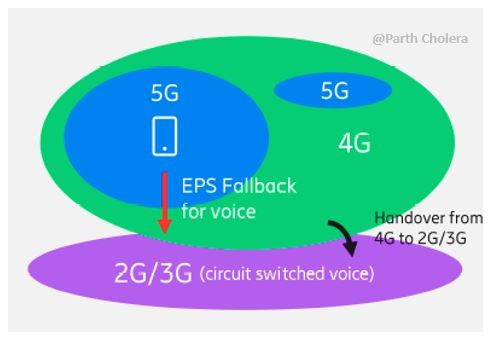
Technical Overview
VoLTE is a critical enabler Call continuity between 5G Voice over New Radio (VoNR) and VoLTE uses Packet Switched Hand Over (PSHO) mobility with the dedicated voice bearer and its defined QoS settings being maintained . In the core network, voice anchoring remains on the same gateway when the terminal moves between LTE and 5G networks. The existing IMS instance is kept. Mobility is similar for both directions between 5G and LTE access
CS voice is not an option in 5G [direct handover to CS Voice], so a VoNR call takes place purely in the IMS environment, incase if 5G coverage become unavailable, the call is transferred to LTE and than it can go to 2G/3G depending on coverage scenario…
3. 2G/3G & VoNR Interworking
In case of Non-VoLTE device or VoLTE services is down
There is no technical explanation as with 5G & IoT coming into the picture mostly all the UEs or devices will be upgraded to at least VoLTE supporting and hence there won’t be any such scenario were traditional 2G service will be used. Also, System module to be SRAN [single RAN] operational outages will for all the Technologies, Still in case [Hardly 1% cases were 5G NR is Active and traditional 2G/3G service is Active/UP] below will be technical call flow.
This scenario mostly will encounter during a Handover from 1 node to other and - Node A [5G/4G/2G] —> Node B [Non-5G with assuming 4G service is down].
In the absence of 5G service, SRVCC / interworking will happen, and due to lack of 4G service EPC will redirect the call to MSC as shown below. [Make a note smart e-EPC to be deployed to sense the outages and direct the call to circuit switch domain, or else will have abrupt call drop with cause code - “Server not responded / Response timeout”].
4. VoNR & VoWiFi interworking
-
In FY19-20 VoWiFi became more and more popular, dominantly in FY2020, with a global epidemic outbreak, most of the Data & Voice was from deep indoors, and these were Vo-Wifi helped telecom operators to provide a seamless experience for voice along with Data services.
-
VoLTE has similarities with VoWiFi in which CSP voice calls run over Wi-Fi radio. On similar standards, VoNR & VoWiFi is architecture was developed. Enhancing the evolved packet core with an evolved Packet Data Gateway (ePDG) and combine GW enables VoWiFi to be considered as an extension of VoNR/VoLTE, with seamless handovers between VoNR/VoLTE and Wi-Fi accesses. Voice call mobility between VoNR/VoLTE and Wi-Fi works in both directions, yet unlike mobility between 3GPP access, the device determines when the call is moved from/to the Wi-Fi access.
-
VoWiFi helps to improve indoor coverage. Devices can be configured to use selected Wi-Fi networks only and then connect to them automatically. The terminal will use VoWiFi once the network is available. A common PGW / combo GW for the EPC ensures the same IP is maintained for the duration of the IMS voice call session. Call continuity enables CSPs to extend their 5G/LTE voice coverage to known Wi-Fi access points
5. Seamless VoNR
Were 5G footprint is present & reverse HOs are possible
-
The main agenda is to provide Voice & Data services over 5G (NR standalone) only and on 4G/2G/3G [when 5G services are not avaible]
-
Seamless mobility between 4G and 5G with voice handover [in both directions] is the main agenda.
-
The most important point to be noted is once the Call transferred to the LTE/2G domain, there is a functionality for reverse HOs.
-
Benefits:
- Always high 5G data speeds also while making phone calls.
- Improved voice quality between 5G smartphones with HD+ Voice
- Improved video calling experience.
- Enables 5G/IoT unique services that interact with other devices / UEs.
- Possibility to use lower 5G frequency bands for excellent indoor and wide-area voice coverage which was miss till date if we compare above all scenario.
- Drawbacks: If spotty and limited 5G coverage, there could be many voice handovers, deteriorating call reliability.
Prerequisite to launch
-
Telecom Mobile Network to be S/W upgrade of IMS to support reverse handover & other signalling functionality.
-
S/W Upgrade for 5G PS core network (5GC) to adjust / support as per H/Os and Technologies.
-
Telecom Mobile Network to be S/W upgrade for 4G and 5G Radio Access Network for enabling reverse handover.
-
Devices/smartphones with support for voice over NR (5G).
-
Devices/smartphones with backwards compatible with earlier functionalities & technologies.
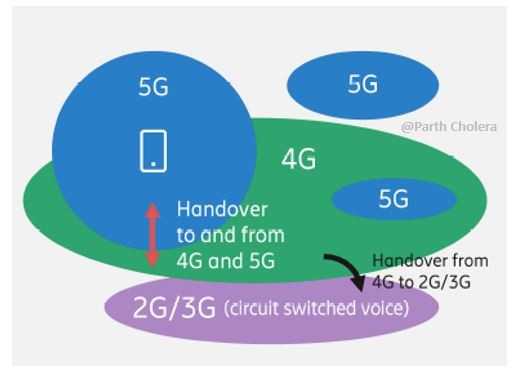
Note: in above all scenarios we have assume that B Party is 5G/VoLTE.
Conclusion
I hope you had a good time reading it & got lots of new things to learn… So tell me was the above information helpful?
Please comment, Follow me for more updates…
Share with colleagues… Feel free to Add… Comment… Suggest…
You can also find me in Linkedin: PARTH CHOLERA - RMSI | LinkedIn

